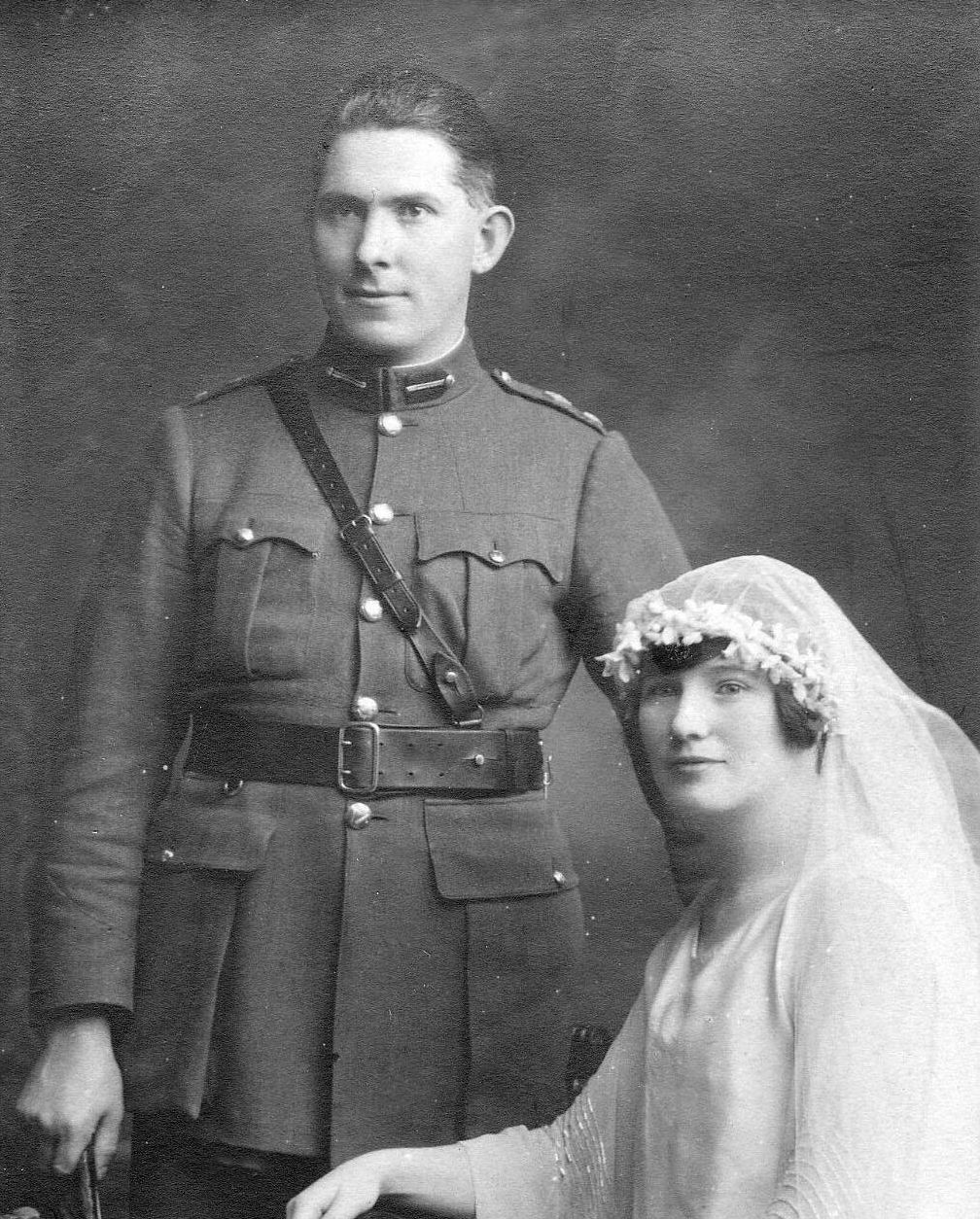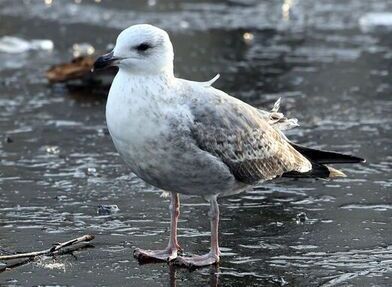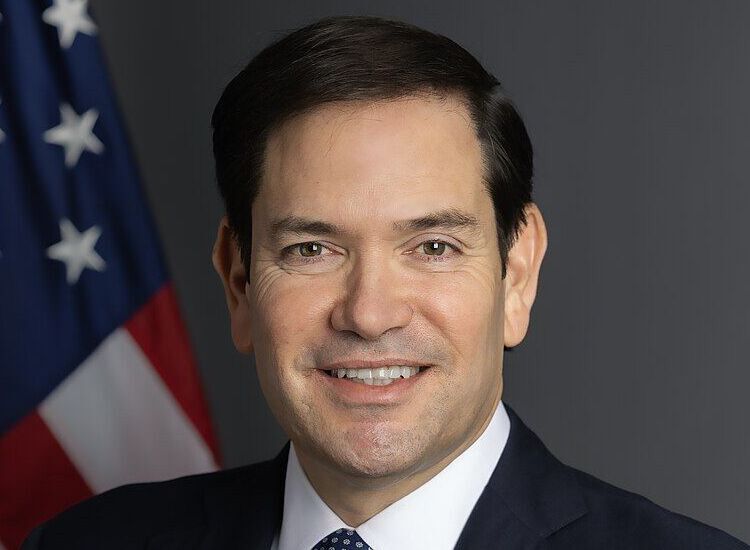For each anniversary until 1936, Rita Muldoon took out two memorial notices — one in her own name and one on behalf of her four children. Both would refer to Dr. M.P. Muldoon “who was shot at Mohill, Co. Leitrim, on March 18, 1923.”
“This annual reminder of a family’s grief appears to have become too much for at least one Catholic clergyman,” according to the authors of “The Murder of Dr. Muldoon.” They can’t tell if it was a priest in Clifden, where she then lived, or the bishop of Galway himself, but he told her to stop as it “opened too many wounds.”
Rita Muldoon went along with the request, but back in May 1924 she wasn’t so easy to silence. She responded in detail to the anti-Treaty IRA statement sent to the Freeman’s Journal, the Irish Times, the Irish Independent, the Longford Leader and other newspapers that its investigation into her husband’s killing before the end of the Civil War showed it to be an “unavoidable accident” and that it was entirely untrue “that a certain civilian was responsible for the death of Dr. Muldoon.”
That unnamed person had sought exoneration and signed off on the press statement before it was sent out, as did Chief of Staff Frank Aiken and publicity director Bob Brennan. Three weeks later, the Longford Leader published Rita Muldoon’s rebuttal. One issue was the IRA’s insistence that their men thought they had come upon “Staters in mufti” (Free State soldiers in civilian overcoats), but she said her husband was wearing a light-grey lounge suit and that neither he nor his companion, Edward Geelan, was wearing any kind of heavy coat. The two men had just left Canon Michael Masterson’s home, where they’d played their usual Sunday night card game.
Mohill had street lighting, unusually for a town of its size, and there was a light nearby. The doctor was clearly singled out, according to the 70-year-old Geelan, who wasn’t harmed, and shot repeatedly by the lead gunman and one of the other two.
“Paddy Muldoon’s body remained at his residence for several days. A postmortem examination was carried out and an inquest held in the Muldoon family home. A jury of 12 (all male) gathered at the house to hear evidence to establish the cause of death,” the authors say. “Various medical personnel and military, clerical and civilian witnesses were summoned, and the Muldoon family home, having already served as a temporary morgue, was abruptly turned into a coroner’s courtroom.”
Dr. Muldoon did not take flight as the IRA statement the following year stated. Instead, the medical evidence, which was supported by Geelan's first-hand testimony, clearly showed that he was facing the gunmen when first shot. The inquest returned a verdict that Dr. Muldoon “was willfully murdered by a person or persons unknown.”
Major General Seán Mac Eoin had visited Mohill on a tour of inspection on Wednesday, March 14. The National Army contingent in the town was also doing policing duties, and he wanted to establish a new station for the Civic Guards. Mac Eoin checked out a couple of locations that might serve: the old RIC barracks and the court house. Now on Sunday night, a 31-year-old doctor, husband and father lay dead in front of that court house
Mac Eoin knew Muldoon, who was a doctor in the National Army’s command. “The Murder of Dr. Muldoon,” by Ken Boyle and Tim Desmond, reproduces the card sent at Christmastime 1922 by Mac Eoin and his wife Alice to the Muldoons; but he knew rather better the man Rita Muldoon believed was the instigator of the attack on her husband. They’d been republican activists together in Longford as far back as 1917.
Michael Patrick Muldoon was born in 1891, the 15th and youngest child of the former Mary Anne Duignan and Patrick Muldoon of County Leitrim. Only nine were still living in 1911, according to the census of that year, and several of those had gone to the West Coast of the U.S. Their remittences sent home helped put the family into the middle class. Paddy went to St. Joseph’s College, a Marist secondary school in Dundalk, and then studied medicine at the National University of Ireland. There he met Margaret Lee, who was from a prosperous family of merchants in Clifden, Co. Galway. Four years younger, Rita dropped her medical studies to get married. On their wedding day, Aug. 17, 1917, she was several months pregnant.
The couple went to live in Monmouthshire in Wales “to put some distance,” in Boyle and Desmond’s phrase, between themselves and their Catholic families unhappy at the circumstances of their marriage. Their first child was born on Jan. 30, 1918. He was given a Welsh middle name, Llewellyn, and was thereafter known as Llew. Barely a month later, Paddy Muldoon heard about a vacancy at the Rynn Dispensary District of Mohill, just eight miles from the farm where he grew up. He applied for the position and got it.
The pandemic of 1918 established his reputation and he was personally popular. “He was a regular sight rushing to patients spread across a wide area in his Model T Ford touring car,” Boyle and Desmond write. “On occasion he cut a particular dash traveling on his motorbike, a Douglas 250cc tourer, capable of 45 miles an hour on the winding country roads.”
Muldoon was swept up in the times, like most other young people, and was known to be a supporter of the independence movement. When the Treaty was signed and ratified, he was on the new army’s list of doctors but also treated anti-Treaty combatants who were brought to his door.
The other person referred to in the book’s subtitle, “A Suspect Priest, A Widow’s Fight for Justice,” Fr. Edward Ryans, was born in 1886 in Durham, England, but his father, mining engineer Joseph Ryans, decided to take up an offer to work in the Arigna mines in Roscommon in the early 1890s. The family eventually moved into Knockcranny House, a large residence in Keadue, near the Leitrim border. After boarding school at St. Mel’s in Longford, he attended St. Patrick’s seminary at Maynooth, where he was a brilliant student, excelling in particular in French.
Historic election
Ryans’s first parish appointment was in Leitrim in 1911, but a couple of years later he was transferred to the parish of Rathcline in South Longford. By 1917, he was a prominent Sinn Féin activist in an area that was about to have one of the most consequential electoral contests in 20th-century Irish history.
Although Count Plunkett, father of the executed Joseph Plunkett, had been elected an MP in Roscommon in February 1917, he only declared after his victory that he wouldn't take his seat at Westminster. Michael Collins, an emerging force, was determined that a pro-prisoner, openly abstentionist candidate would stand for the vacant South Longford seat in May. Senior leaders in the movement were opposed and the prisoners were against the plan, fearing a demoralizing defeat to the Irish Parliamentary Party. Nonetheless Collins had Joseph McGuinness, second in command of the Four Courts in 1916 and a prisoner at Lewes in England, put on the ballot against his will. McGuinness won very narrowly after a recount, becoming the first participant in the Easter Rising to win an election.

Éamon de Valera was imprisoned with two others at Arbour Hill in 1922. One of them was the presumed killer of Dr. Muldoon.
Ryans was subsequently moved by his bishop to North Longford, and it was there he befriended Mac Eoin, a blacksmith who had been sworn into the Irish Republican Brotherhood at age 20 back in 1913.
Ryans continued his activism during those heady days. It was likely the main reason he didn’t move up in the church ranks, as someone with his academic abilities would normally have been expected to. There was always, though, some controversy swirling over his head. For one thing he drove a Liberty Six, a very expensive car of the era, and there were disputes over money both at parish level and within Sinn Féin.
Meantime Mac Eoin, known as “The Blacksmith of Ballinalee,” emerged as a particularly effective and notably chivalrous IRA leader during the War of Independence. He was captured in March 1921 and sentenced to death for murder. Collins first tried unsuccessfully to spring him from Mountjoy with a force of his most trusted men, and then made his release a condition for continued involvement in talks that eventually led to the Treaty. Mac Eoin seconded the motion supporting the Treaty in the Dáil in December; Joseph McGuinness, the winner in South Longford in 1917, also backed it.
In January, Ryans presided over a meeting of the South Leitrim Executive of Sinn Féin Clubs that overwhelmingly voted to support the Treaty and was nominated to represent them at the upcoming Sinn Féin Ard Fheis. He spoke strongly in favor at a public meeting in Carrick-on Shannon on St. Patrick’s Day 1922 to launch the pro-Treaty campaign for elections in June. Those favoring the deal got 70 percent of the seats, but at some point the priest switched sides. Authors Boyle and Desmond speculate that family pressure was a factor as his sister and brother were prominent anti-Treaty militants in their native area of Arigna, which had a flying column of 70 fighters in the mountains resisting the government.
That brother, Vincent, was one person Fr. Ryans suggested was responsible when his 19-year-old housekeeper became pregnant. Rita Muldoon, who was expecting her fourth child, likely became aware of Mary Kate Gallogly’s pregnancy through her involvement with the Mohill District Nursing Association. She was in no doubt that the priest himself was the father. Early on, the Muldoons pressurized the priest to ensure he “did the right thing,” in the authors’ phrase, and stand by his young housekeeper.
“Mary Kate’s pregnancy outside marriage was one of about 1,700 reported in Ireland each year during the 1920s,” write the authors, though it was acknowledged at the time that the figure could have been double that.
A meeting took place about the situation on Jan. 17, which was attended by the Muldoons, Fr. Ryans and others. About an hour into the meeting, in Rita’s words, “Fr. R produced an Automatic and informed guests and especially Dr. M and myself that the weapon would account for 12 men, told us that he carried this with impunity, that he often escaped search when others were being held up and searched by Free S. Troops.”
The priest sent Gallogly to have her child at Holles Street, Dublin, registered under the false name Kate Brown. Baby Rose was born on Jan. 29, 1923. The authors describe the dramatic events another two weeks later when Ryans was arrested, along with Mary Kate, after apparently attempting to abandon baby Rose in a Dublin street. The baby was sent to a home, where she died not long afterwards. Back in his home area the priest’s behavior became increasing erratic and he was at times drinking heavily.
After Muldoon’s murder, people at the highest level of government, such as General Richard Mulcahy and fellow minister Kevin O’Higgins, were well aware of the details of the situation, with Mac Eoin being their main source. Detectives of the Criminal Investigative Division, then run by supporters of the late Collins, were sent down to look into the doctor’s murder. But little happened. And Mac Eoin, meeting and corresponding with his one-time comrade and friend Ryans, seemed to play along with the priest’s differing versions of his story. The charges against Gallogly were dropped, but not before she’d been arrested again, in what looked like an attempt to stop her testifying at Ryans’s trial for child abandonment. Indeed, Rita’s belief was that Fr. Ryans had Paddy murdered to stop him testifying at trial in Dublin.
Lead gunman
Ultimately, there were two mistrials and Ryans was tried three times. As the custodial sentence for the crime was typically only one month, the priest’s being denied bail at one point is seen by Boyle and Desmond as highly suspicious. It was an attempt, in their view, by the Free State to keep the focus away from the murder of the young doctor in Leitrim. The Catholic Church successfully kept any reports of Ryans's trials out of the newspapers, local and national; only the Irish Times, then mostly read by Protestants, covered them.
The authorities also knew that the lead gunman in the Mohill attack was almost certainly John Charles Keegan. He was also a defector from the pro-Treaty side — having initially joined the National Army, he threw in his lot with the diehard republicans. Keegan was associated with a number of controversial attacks on unarmed people during the Civil War. One was on Edward Fitzgerald who was in National Army uniform but unarmed when he was shot dead in a pub. The soldier’s widowed mother had lost her other three sons on the Western Front. Mac Eoin’s men finally caught up with Keegan in 1924, and he was placed in Arbour Hill prison where he had just two fellow inmates, both of whom were rather more famous than him — Austin Stack and Éamon de Valera.
Keegan, who spent a long time in America, maintained his connection to de Valera as best he could over the decades through correspondence and meetings. The latter gave him an hour of his time in 1965 when he was president. Ryans, meanwhile, wrote a detailed report to de Valera, ever anxious to clear his name so he could resume his priestly career. He, too, would be forced into exile, half admitting the paternity of the unfortunate baby Kate, but denying he instigated the doctor’s murder.
It solved a problem for the state, which had declared an amnesty for acts committed during the Civil War and had no appetite for pursuing a case of a murder committed by a combatant before it had ended. And they certainly did not want to upset the Catholic church in any way. The republicans were thinking less strategically, but clearly Ryans’s status as a priest made it a complicated issue for them.
After the public relations debacle of May 1924, Aiken sent down during the summer a senior IRA officer, codenamed “K,” to look into what went wrong. K recommended a choice of two courses of action: a new investigation, in which the gunmen would all be interviewed, as would Rita Muldoon, or just drop the case entirely. But it would be another year, and more bad publicity, before the IRA took the latter course. K also wrote in his report that Ryans “is very reluctant to refer to or discuss the first charge [paternity of the child] of which is undoubtedly guilty and there are certainly grounds for suspecting him of the second [the instigation of Muldoon’s murder].”
The authors of “The Murder of Dr. Muldoon” says he’s the only significant figure on either side of the Treaty divide to emerge from the affair with any credit. Handwriting analysis in the 21st century revealed that K was a republican who’d been defeated in a Dublin bye-election in March but would go on to win another in November. That victory would mark the beginning of Seán Lemass’s 42-year political career, the last seven of which were as Taoiseach.
Lemass, who had been active in the Four Courts garrison alongside Ernie O’Malley in 1922 and subsequently outside Dublin, was an obscure figure up until the presumed murder and disappearance of his better-known older brother Noel, at the hands of some of the same people who tried to spring Mac Eoin from death row in 1920. A campaign by the family eventually led to the body’s discovery in October 1923 and Seán Lemass was released from Curragh internment camp to attend a huge republican funeral.

Dr. Paddy Muldoon.
Rita Muldoon, who died in 1953, saw her three sons follow their father’s footsteps into medicine — they all practiced in England — and her daughter, like her, drop out to get married.
Boyle and Desmond write, “Whenever the children asked about their father, Rita would start to cry; in the end, they learned not to ask too many questions. But they recalled that she loved to sing ‘Roses of Picardy,’ a song first popular during the Great War, when they first met, fell in love and married.” Two lines stood out in the memory — Rita would sing:
But there's one rose that dies not in Picardy
'tis the rose that I keep in my heart.










